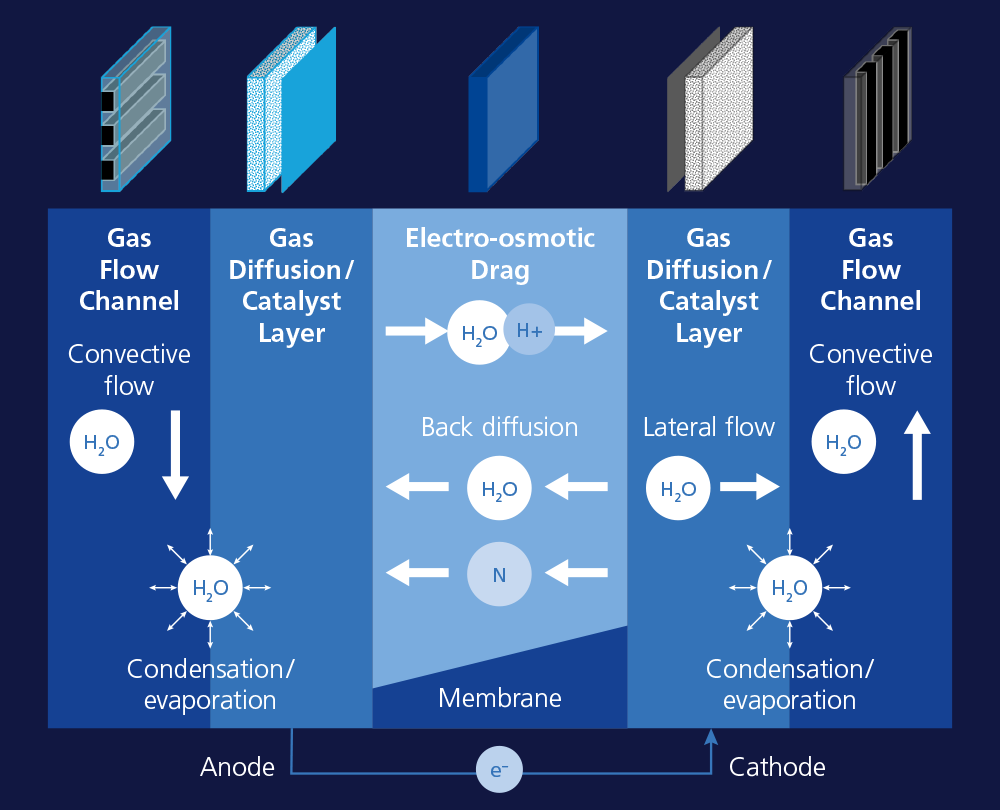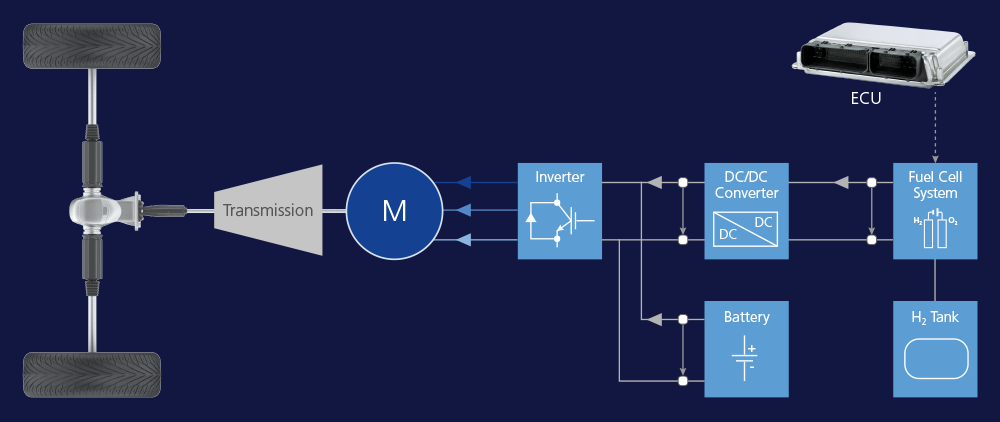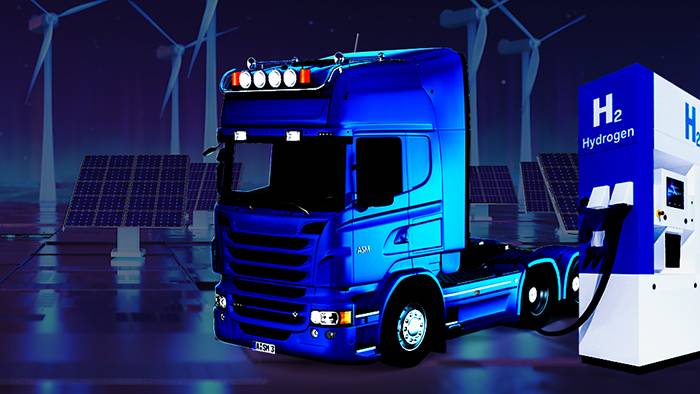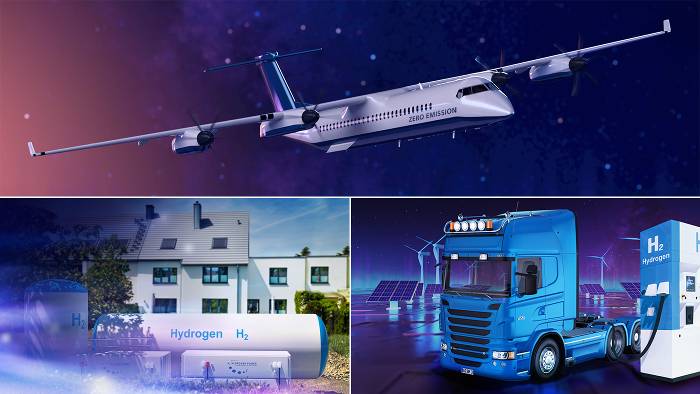Many challenges related to electrifying vehicles still need to be overcome. One of them is the continuous provision of electrical energy for the long ranges required by commercial vehicles. Shanghai Fuel Cell Vehicle Power System Co., Ltd. relies on fuel cell technology, using a simulator provided by dSPACE to efficiently develop and validate the fuel cell software.
Hydrogen is considered the cleanest energy source of the 21st century. The fuel cell technology, used to obtain electrical energy from hydrogen, is therefore a pillar of future-oriented energy supply for many companies in the automotive industry. Due to the range requirements and efficiency criteria, this holds true for commercial vehicles in particular. The technology company Shanghai Fuel Cell Vehicle Power System Co., Ltd., Shangran Power for short, is working on supplying fuel cell systems to industrial enterprises. Systems for power ranges between 40 kW and 55 kW have been available since 2001. Zhang Lingxia, a HIL test engineer responsible for fuel cell controllers in HIL tests as well as the development and maintenance of HIL systems, explains the company’s overarching objective:
“Especially in the field of commercial vehicles, we receive many requests with regard to electrifying power-trains. With our new high-performance fuel cell system, we aim to offer an energy supply solution tailored precisely to commercial vehicles.”
The fuel cell system named START-300E is designed to meet the following requirements:
- The properties of the fuel cell are based on the future operating conditions of commercial vehicles.
- The system has a very low hydrogen consumption.
- It features a compact, easy-to-integrate design.
- It stands out due to its exceptional reliability and outputs a constant supply of power.
Development and Test Concept
A suitable fuel cell concept is required to achieve these characteristics, combined with a powerful controller to ensure optimal cell operation. The company decided to create a polymer electrolyte fuel cell, which has especially favorable properties for mobile applications. The controller software was developed in parallel with the fuel cell hardware. For Shangran Power, it was important to obtain information on how the controller works early on and to streamline the design process as much as possible. This is what prompted the company to set out in search of a suitable solution.
“Our developers wanted to test new revision statuses for the controller algorithms and assess how effective they were. Because the hardware was still being developed, we were looking for a suitable development and test solution. We also wanted to use this solution in the release tests for the final electronic control unit,” explains Liu Fengwei, who is the manager of the electrical and electronic control department.
A simulation-based method was discussed in a talk with dSPACE. It turned out that dSPACE had a complete series of solutions for simulating fuel cells and validating controllers.
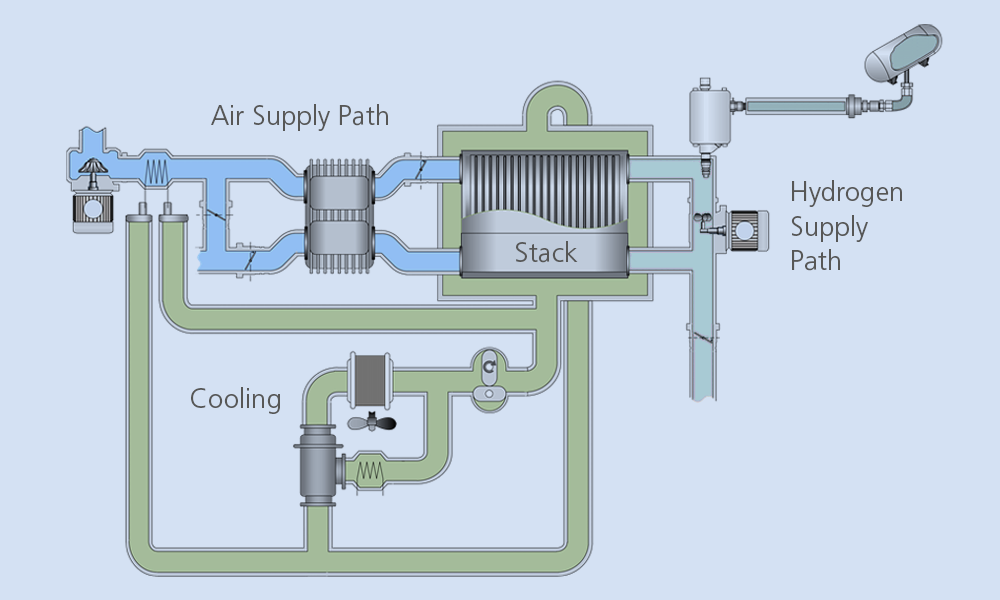
Virtual Fuel Cell in the Loop
Shangran Power installed this series of solutions in the form of a hardware-in-the-loop (HIL) simulator equipped with the ASM (Automotive Simulation Models) tool suite. This solution makes it possible to realistically simulate a vehicle operated by a fuel cell. It is even possible to examine the behavior of the fuel cell and that of the electric powertrain in detail during the virtual test drives.
“The ASM fuel cell model meets all of our requirements concerning the model quality and real-time capability to simulate the current/voltage behavior, the gas mass flows, and the temperature distribution in closed-loop operation. Together with the HIL simulator, it represents a suitable tool for performing our validation testing effectively and purposefully,” explains Liu Fengwei in reference to the advantage of the simulation-based method.
The precise simulations make it possible for Shangran Power to obtain information about the relative humidity or the diffusion effects of nitrogen and water during early stages of the process. “We can use the early findings from the simulation to optimize our algorithms for the fuel cell,” clarifies Zhang Lingxia. He adds: “The fact that we can quickly confirm the effectiveness of the optimizations is especially valuable.”
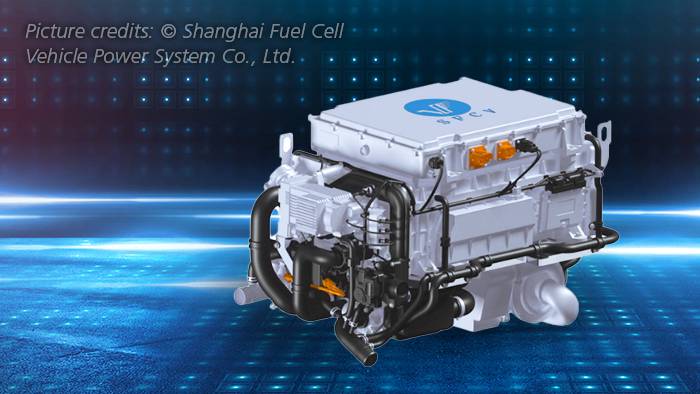
Simulation Is Key to Success
At Shangran Power, four people work with the HIL simulator. Including commissioning, it took roughly two months until all of the developers were well acquainted with the test system. Now it is part of their everyday work and helps them with their job. For adoption into everyday testing, the ASM fuel cell simulation running on the hardware-in-the-loop simulator had to pass Shangran Power’s final acceptance test based on an automatic verification method for the entire operating area. Throughout the test, the simulation was able to meet all safety margins and operate within all limitations set and checked by the controller software.
This was clearly evident by the fact that there were no error codes such as ‘power level violation’ or ‘shutdown condition fault’ in the controller’s software log. Zhang Lingxia describes the benefits they were able to achieve: “Using the HIL simulator has significantly improved the efficiency of our testing and validation, as well as the reliability of our controller software.” He adds: “We are very happy with the test solution from dSPACE. It satisfies our requirements for the comprehensive functional testing of fuel cells.” Simulator hardware and simulation models also offer multiple configuration options. Electrical fault tests are used for validation purposes in the subsequent steps. Equipped with a powerful test system, the company is well positioned to promote the electrification of commercial vehicles with reliable components.

(Left) Key variables of the virtual fuel cell are depicted clearly during the simulation.
(Right) Exact parameterization and analysis of the highly accurate simulated electrochemical processes in the cell.
Shanghai Fuel Cell Vehicle Power System Co., Ltd.
In 2001, Shanghai Fuel Cell Vehicle Power System Co., Ltd. (hereinafter referred to as Shangran Power) was established in Shanghai in response to the national 863 Program Major Special Project for Electric Vehicles to achieve the goal of realizing the productization and industrialization of major special projects of electric vehicles.
Polymer Electrolyte Fuel Cell
The polymer electrolyte fuel cell, also known as a proton-exchange membrane fuel cell or solid polymer fuel cell, is a low-temperature fuel cell. Using hydrogen (H2) and oxygen (O2), chemical energy is transformed into electrical energy. The electrical efficiency is around 60 percent, depending on the operating point. A solid polymer membrane generally serves as an electrolyte. In order to obtain a technically relevant electrical voltage, multiple cells (ten to several hundred) are connected in series to create what is known as a stack.
Courtesy of Shanghai Fuel Cell Vehicle Power System Co., Ltd.
About the authors:

Liu Fengwei
Manager of the electrical and electronic control department, Shanghai Fuel Cell Vehicle Power System Co., Ltd.

Zhang Lingxia
HIL test engineer, Shanghai Fuel Cell Vehicle Power System Co., Ltd.


